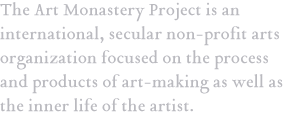The Elements (part 1): Conversatio Morum » “Conversion of Life”
[This series of posts, “The Elements of Monasticism” asks the question, what exactly is monasticism? The first three Elements are from the Catholic Benedictine tradition: Conversatio Morum, Stabilitas Loci, and Obedientia.]Conversatio Morum (or Convertio Morum) is interpreted variously: from merely “to live the Benedictine form of the cenobitic life” / “fidelity to the monastic life,” to “conversion of life”[1. St. Benedict’s Toolbox: The Nuts and Bolts of Everyday Benedictine Living By Jane Tomaine] or “continuous renewal of life.”
Isn’t the former, “fidelity to the monastic life” sort of circular for a vow? The vow of Conversatio Morum is to live the benedictine life, which means to take the vow of Conversatio Morum…
I prefer the “conversion of life” interpretation of Thomas Merton, who I’m sure I’ll be writing about more at In Otherhood. Merton felt that Convertio Morum was central to monasticism. At Diverse Journeys, Meath Conlan (an artmonk in his own right) writes:
In the recent and customary view, but not necessarily the most deeply traditional one, monastic life was seen as a state into which one enters, a state in which one perseveres, rather than a process in which one goes forward dynamically to conquer new ground. Merton hinges this notion of progress and of transformation to what he calls the central monastic vow of conversio morum, conversatio morum. It is very interesting to note that he uses here the term conversio morum, translated as “conversion of life,” which is one of the three Benedictine vows.
There has been a great controversy in the history of the Benedictine Monastic Order, Trappists included, about whether Saint Benedict wrote: conversio morum or conversatio morum. Conversio is a conversation that takes place once and for all; conversatio is a conversion that is expressed over and over again. It does seem that even Saint Benedict’s original text vacillated between conversatio and conversio. Our own monastic tradition emphasizes the fact that, regardless of what the original word was, we monks are to live in conversation – in constant renewal and constant conversion, which is the very essence of monastic life. Merton, too, considers conversion, a constant turning, to be the very essence of monastic life. This is how he came to take a very critical attitude toward the structures of monastic life. He formulated this clearly when he said that the time for relying on structures has come to an end.
I have in my notes from a year or so ago a great definition (unfortunately without a reference):
“[Conversatio Morum] obliges the monk to an ever continued conversion, an ever repeated renewal of his life, an unceasing yielding to the formative power of monastic living…” [1. Even google can’t tell me where I found this. Can you?]
Leave a Reply
You must be logged in to post a comment.




